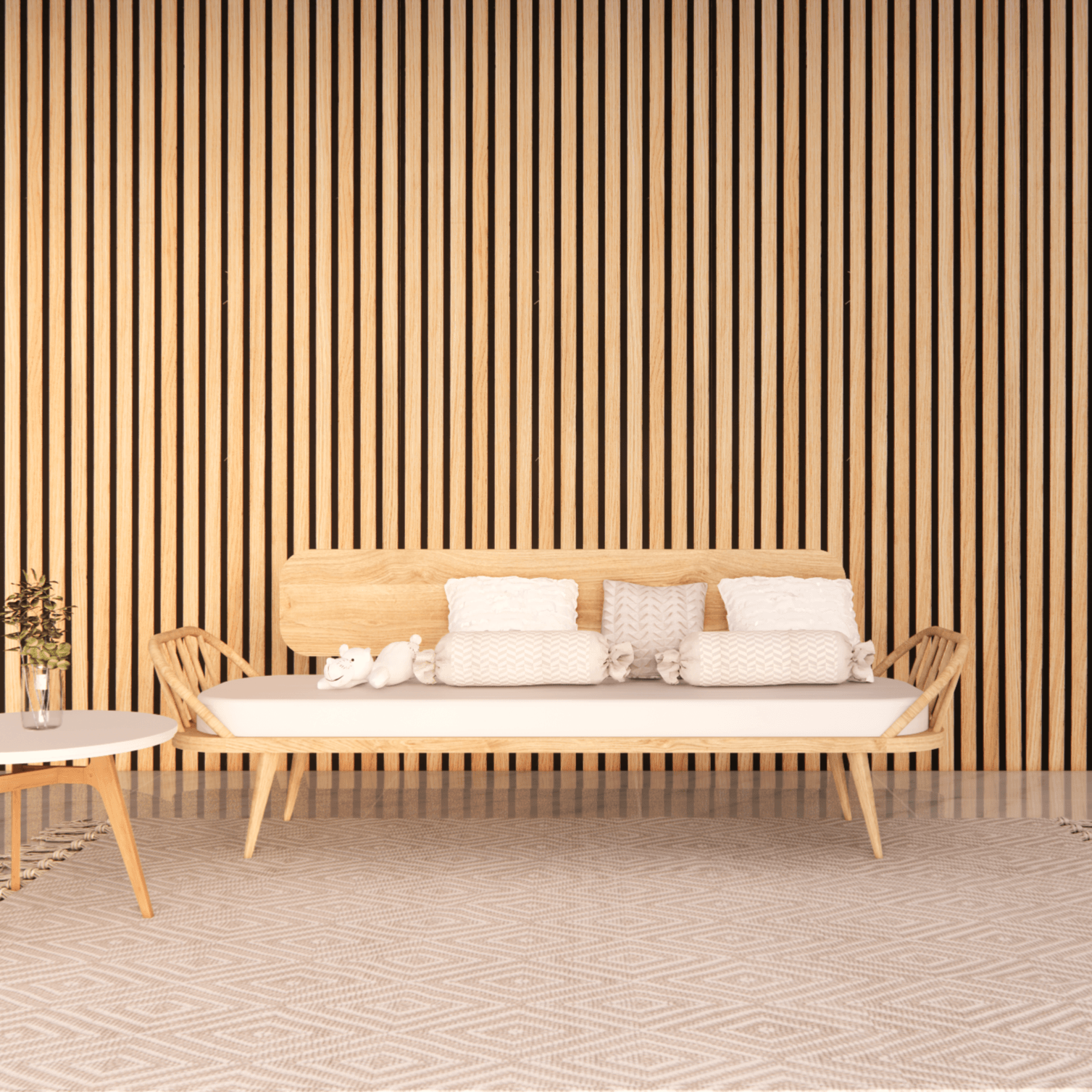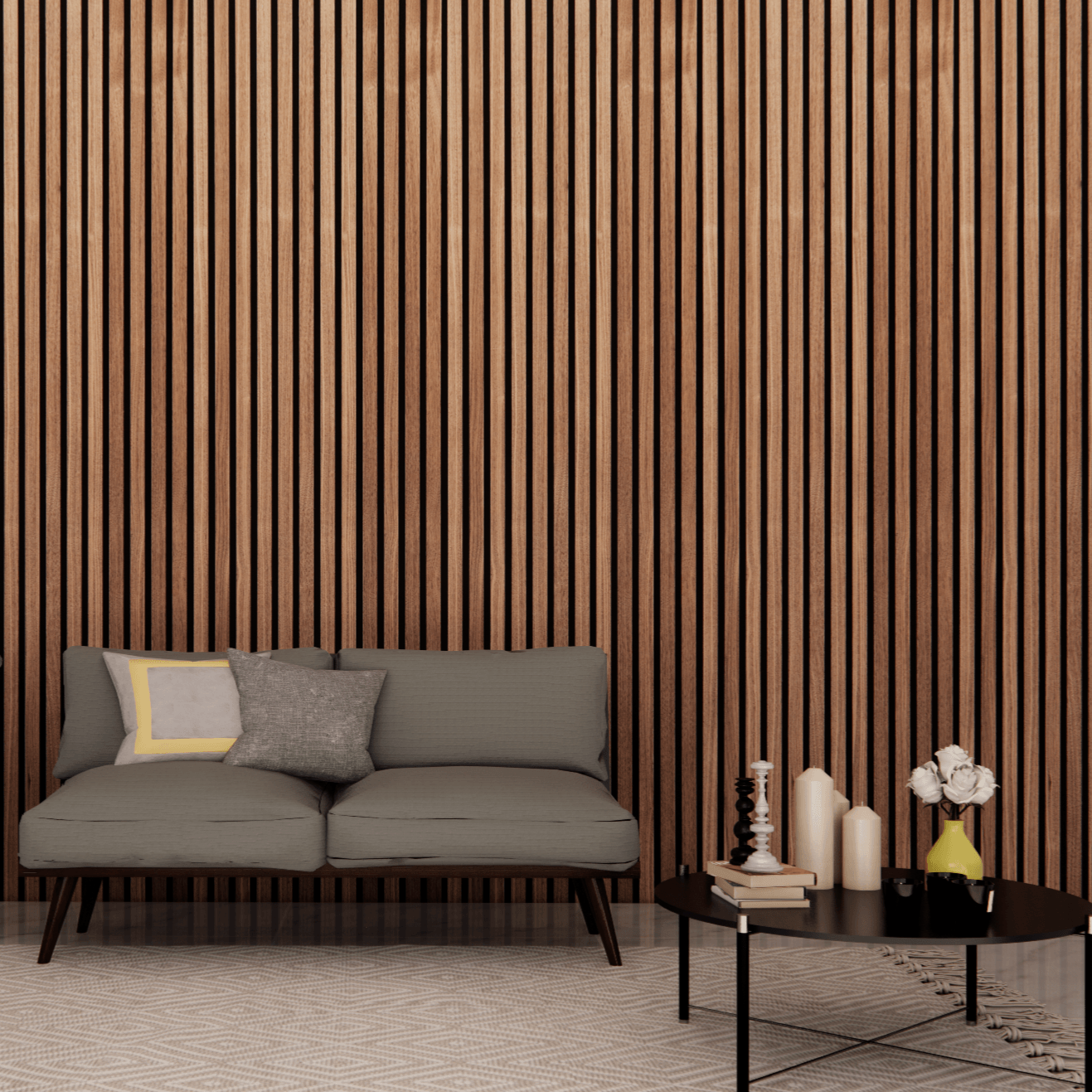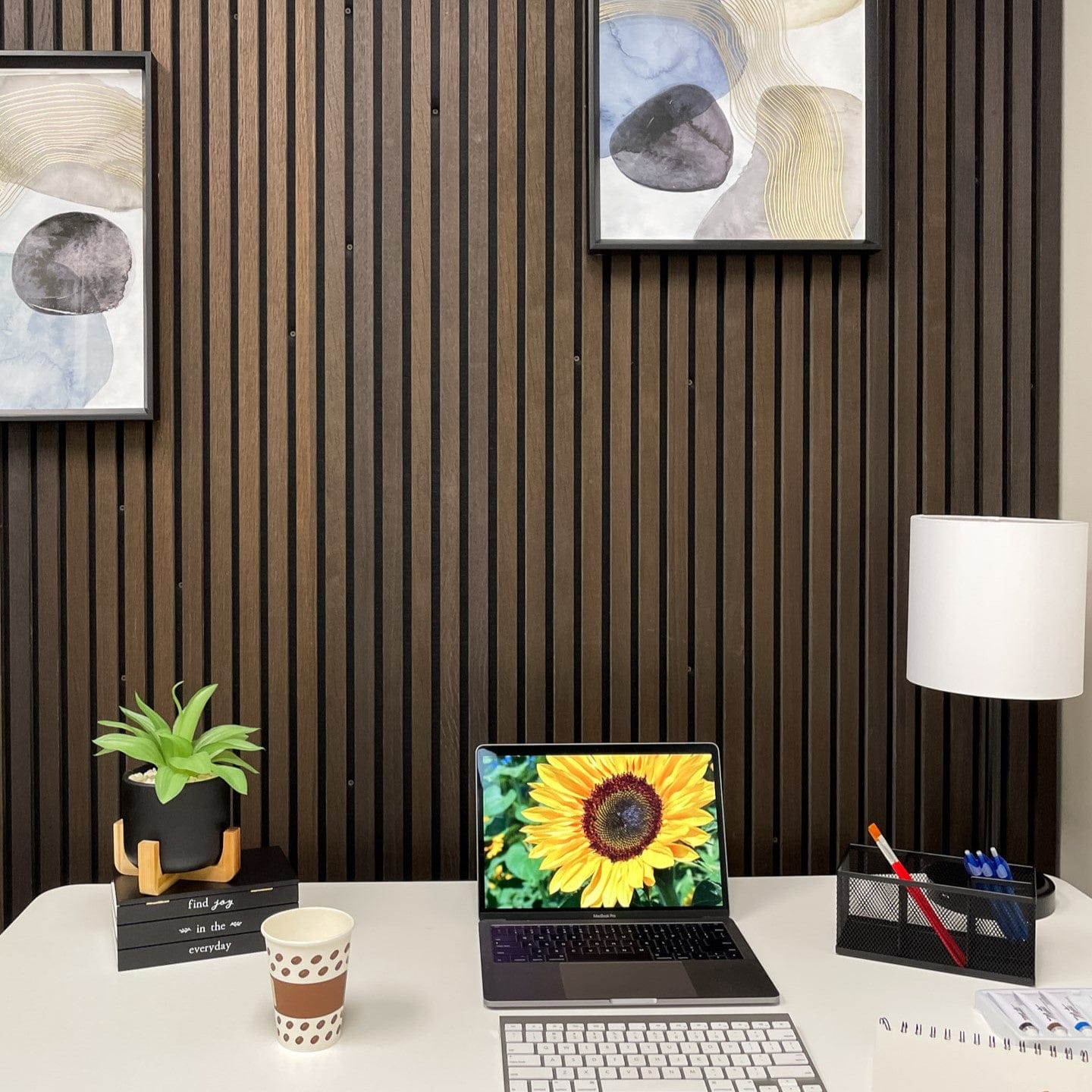The Functionality of Wood Slats
Aside from their aesthetic appeal, slatted wood panels also have several practical uses. They can be used as a sunshade, providing shade to a patio or outdoor living area. They can also be used as a fence or barrier, creating a sense of privacy and security while still allowing light and air to flow through. In commercial settings, wood slats can be used as a decorative element on ceilings or walls, adding visual interest and texture to a space.
Types of Wood Used for Slatted Panels
While any type of wood can be used for slatted panels, some types are more commonly used than others. Cedar is a popular choice due to its natural resistance to decay and insects, as well as its beautiful color and texture. Redwood is another popular choice, as it is also resistant to decay and has a unique, striking grain pattern. Other woods commonly used for slatted panels include pine, spruce, and fir.
Caring for Wood Slats
Proper maintenance is important for ensuring the longevity of slatted wood panels. Regular cleaning with a soft-bristled brush and mild soap and water can help prevent the buildup of dirt and grime. It's also important to inspect the panels regularly for any signs of damage or wear, such as cracks or warping. If any damage is found, it should be repaired promptly to prevent further damage.
Conclusion
Slatted wood panels are a timeless design element that can add both beauty and functionality to any space. Whether used as a decorative element or for practical purposes such as privacy or sunshade, wood slats are a versatile and durable choice. With proper care and maintenance, slatted wood panels can last for many years, providing both aesthetic and practical benefits to any home or commercial space.
Choosing the Right Slatted Wood Panels for Your Home
When it comes to choosing the right slatted wood panels for your home, there are a few things to consider: the type of wood, panel size, spacing, and finish. Slatted wood panels are a great way to add texture, depth, and interest to any room in your home.
Types of Wood for Slatted Panels
The type of wood you choose will determine the overall look and feel of your slatted wood panels. Popular options include oak, cedar, and bamboo. Oak is a great choice if you're going for a classic, traditional look, while bamboo is perfect for a more modern feel. Cedar is a great option if you're looking for a wood that is resistant to decay and insects. It also has a lovely aroma that can add a natural freshness to your space.
Another option to consider is reclaimed wood. This is wood that has been salvaged from old buildings, barns, or other structures. Reclaimed wood has a unique character and history that can add a lot of charm to your space. It's also an eco-friendly choice since it's being repurposed rather than cut down from new trees.
Selecting the Ideal Panel Size and Spacing
The size and spacing of your wood slats will depend on the design of your room. Narrower panels with tighter spacing work well in smaller rooms, while larger panels spaced farther apart can create a sense of openness in larger spaces. You also want to consider the functionality of your slatted wood panels: will they be used for privacy or simply for aesthetic purposes?
If you're looking to add privacy to a room, you'll want to choose slats that are closer together. This will create a barrier that will prevent people from seeing through the panels. On the other hand, if you're simply looking to add some visual interest to a room, you can choose slats that are spaced farther apart. This will allow light to filter through and create interesting patterns on your walls and floors.
Customizing Your Panels with Finishes and Colors
Once you've chosen the right type of wood and panel size, selecting the right finish and color will bring it all together. A natural wood finish can create a warm, rustic feel while a painted finish can add a pop of color and modernity. Experiment with different finishes and colors to find the perfect look for your space.
If you're going for a natural wood finish, you'll want to choose a stain that will enhance the natural beauty of the wood. This can be a light stain that will bring out the grain of the wood, or a darker stain that will add depth and richness to the color of the wood. If you're looking to add some color to your space, you can choose a painted finish in a bold hue that will make a statement.
Another option to consider is a distressed finish. This is a finish that is designed to make your slatted wood panels look aged and weathered. It can add a lot of character and charm to your space, and it's a great way to add a vintage or rustic feel to your home.
Overall, slatted wood panels are a versatile and stylish way to add interest and texture to any room in your home. By considering the type of wood, panel size, spacing, and finish, you can create a custom look that will enhance the beauty and functionality of your space.
Incorporating Slatted Wood Panels into Your Home Design
Slatted wood panels can be incorporated into a variety of living spaces, from living rooms to bedrooms to kitchens. Here are a few ideas to get you started:
Enhancing Your Living Room with Wood Panels
When used in a living room, slatted wood panels can create a cozy, intimate space. Consider adding wood slats to one wall as an accent, or use them to divide the living room from a dining area or entryway.
Creating a Cozy Bedroom Atmosphere
Wood slats can also add a touch of warmth and texture to your bedroom. Consider using them as a headboard or accent wall for a cozy, rustic feel.
Adding Style to Your Kitchen and Dining Area
In the kitchen and dining area, slatted wood panels can separate the space without completely closing it off. They can also be used to create a focal point, such as a wood slat ceiling.
Installation Tips and Tricks for Slatted Wood Panels
Preparing Your Walls for Installation
Before installing your slatted wood panels, make sure your walls are clean and dry. If you're installing on drywall, consider adding additional support, such as furring strips or a plywood backing.
Properly Aligning and Securing Your Panels
When aligning your wood slats, use a chalk line as a guide for a straight row. Use a level to ensure that each panel is properly aligned, and pre-drill holes for screws for a seamless finish.
Maintaining Your Slatted Wood Panels for Longevity
To keep your slatted wood panels looking their best, be sure to clean them regularly with a damp cloth and mild detergent. Avoid using harsh chemicals or abrasives that could damage the wood. If you notice any signs of wear or damage, be sure to address them before they become major issues.
In conclusion, incorporating slatted wood panels into your home decor adds a touch of elegance that is both versatile and timeless. By choosing the right type of wood, panel size and spacing, and finish, you can create a customized look that suits your personal style. By following installation guidelines and regular maintenance, you can ensure your slatted wood panels will add beauty and style to your home for years to come.







